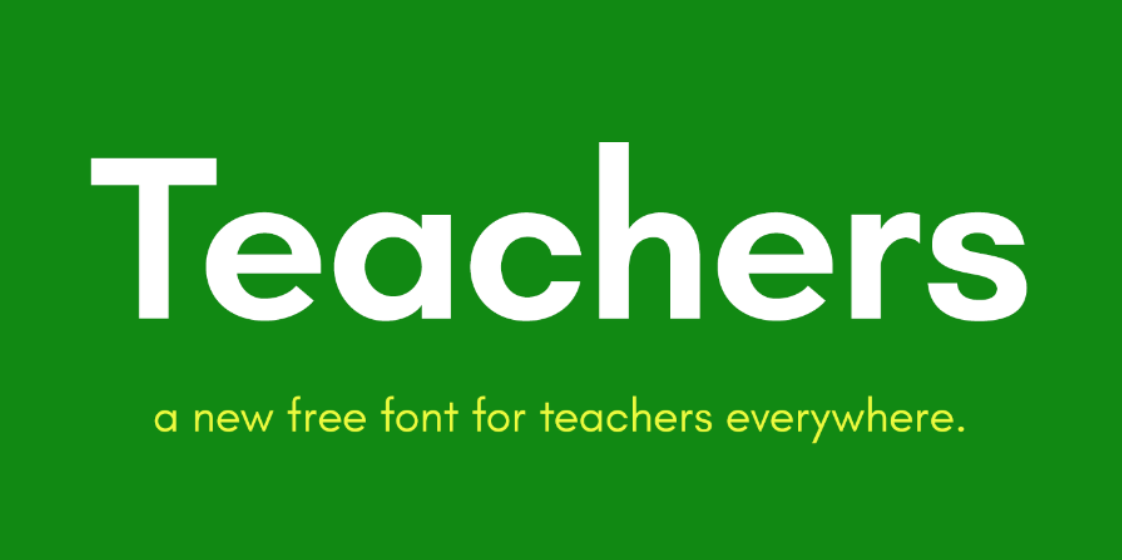Creating instructional content is a nuanced process that requires careful consideration of various design principles. When it comes to instructional design, integrating best practices not only ensures that the content is educational and engaging but also enhances the overall branding, graphic design, and web design. Here’s a comprehensive look at how to approach instructional design effectively and its relevance across different design disciplines.

Teachers Font
The release of the Teachers font, available for free download from Google Fonts, presents an opportunity to enhance instructional design by incorporating a font specifically tailored to educational materials. With its letterforms based on kindergarten handwriting, the Teachers font offers a practical solution for designing materials geared towards students in grades K-6. Its compatibility across various display mediums ensures adaptability to diverse educational contexts, from printed worksheets to digital platforms. By utilizing this font, instructional designers can enhance readability and engagement, reinforcing fundamental literacy skills while also celebrating the invaluable contributions of teachers.
Understanding the Core Principles of Instructional Design
- Learner-Centered Approach: Always prioritize the needs and preferences of the learners. Understand their background, learning styles, and goals to create content that is relevant and accessible.
- Clear Objectives: Define what the learners are expected to achieve by the end of the instruction. Clear, measurable objectives guide the design process and ensure that all content is aligned with these goals.
- Structured Content: Organize content logically and coherently. Use a modular structure that allows learners to progress in manageable steps, reinforcing knowledge incrementally.
- Engagement and Interactivity: Incorporate interactive elements such as quizzes, simulations, and discussions to keep learners engaged. Active participation helps in better retention of information.
- Feedback Mechanisms: Provide timely and constructive feedback. This helps learners understand their progress and areas that need improvement.
Relevance in Branding
- Consistency: Ensure that instructional materials reflect the brand’s voice and style. Consistent use of colors, fonts, and logos strengthens brand identity and fosters a professional look.
- Brand Values: Integrate brand values into the content. For instance, if your brand values innovation, showcase this through cutting-edge instructional techniques and tools.
- Audience Connection: Tailor content to resonate with your target audience. Understanding their needs and preferences helps in creating content that aligns with brand messaging and builds stronger connections.
Integration with Graphic Design
- Visual Hierarchy: Use graphic design principles to create a clear visual hierarchy. Important information should stand out, guiding the learner’s eye through the content seamlessly.
- Aesthetics: High-quality visuals not only make content more appealing but also aid in comprehension. Infographics, diagrams, and charts should be designed to be both informative and visually engaging.
- Accessibility: Ensure that all graphic elements are accessible. Use alt text for images, provide high contrast between text and background, and ensure that fonts are legible.
Application in Web Design
- User Experience (UX): A well-designed instructional website should offer an intuitive and seamless user experience. Easy navigation, clear calls to action, and responsive design are crucial.
- Load Times: Optimize images and other media to ensure quick load times. Learners are more likely to engage with content that loads swiftly and runs smoothly.
- Interactivity: Incorporate web design elements that facilitate interactivity, such as clickable elements, hover effects, and interactive timelines. This makes the learning experience more dynamic and engaging.
Holistic Approach to Instructional Content Creation
- Cross-Disciplinary Collaboration: Work with experts from different fields, such as graphic designers, web developers, and branding specialists, to create comprehensive instructional content. Each discipline brings valuable insights that enhance the overall quality.
- Feedback and Iteration: Continuously gather feedback from learners and stakeholders to refine and improve the content. Iterative design ensures that the instructional material remains relevant and effective.
- Technology Integration: Leverage the latest technologies to enhance instructional content. Virtual reality (VR), augmented reality (AR), and artificial intelligence (AI) can offer immersive learning experiences.
Conclusion
Designing instructional content is a multifaceted process that intersects with branding, graphic design, and web design. By adhering to best practices, you can create instructional materials that are not only educational but also engaging and aligned with your brand’s identity. Remember, the ultimate goal is to facilitate learning in a way that is effective, enjoyable, and memorable. Through careful planning and execution, you can ensure that your instructional design efforts yield the desired outcomes and make a lasting impact on your audience.
Rely on KIMBO Design
At KIMBO Design we have a highly experienced team of writers, designers, and programmers who can create your ideal instructional website or product. From instructional videos to LMS integration KIMBO can guide you to the right solution.
Why not call the team at KIMBO Design at 604-738-6448 or contact us by e-mail. We’ll help strategize an approach that makes the most of your opportunities to better communicate with your target audience.


